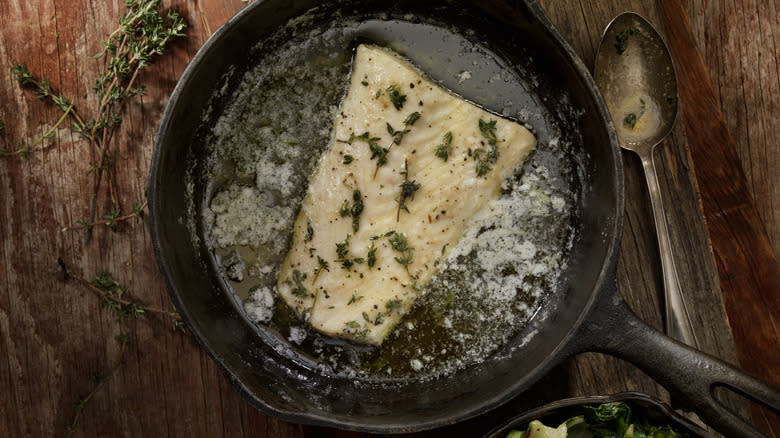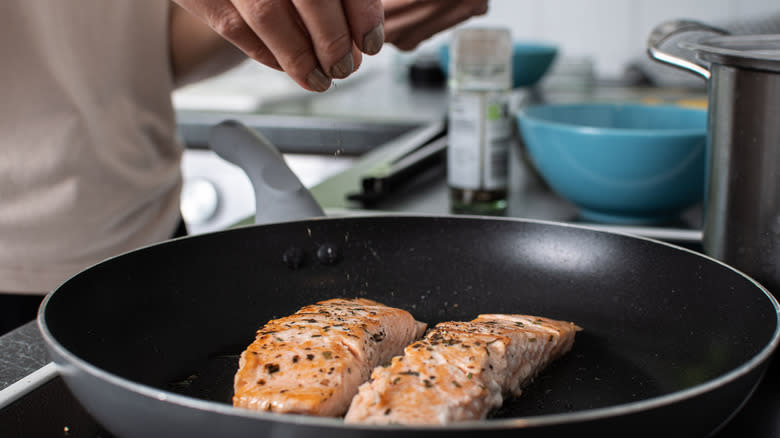Butter-Basting Is Key For The Most Tender And Flavorful Fish

There are many different ways to cook fish that provide a flavorful and nutritious meal compared to other proteins that typically make it onto a dinner plate. Perhaps you're a fan of poached salmon, enjoy baked cod, or feen over mahi mahi tacos. Out of the many varieties of fish and accompanying techniques to cook them, butter-basting is an ideal method that results in fish that's both tender and flavorful. It's a rather easy way to cook fish without overdoing it — because we all know how fast it can turn from perfectly cooked to overdone and dry.
Butter-basting is a technique where you cook the fish, or another protein like steak, in a pan with oil and butter, then continually spoon (or baste) the melted butter over the piece of meat at least a few times during the cooking process. This works well with fish because the buttery and nutty flavors pass through the flakes to provide optimal flavor in every bite. Combine herbs, garlic, or shallots with the butter to boost the flavors even further. If you do it right, this will result in properly-cooked fish since the basted spoonfuls of butter help cook the top and middle of the fillet while the heated pan does the rest. Perhaps best of all, the stovetop's heat and the warm butter work together, typically making this a fast cooking method.
Read more: 12 Popular Grocery Store Butter Brands, Ranked
Monitor Internal Temperatures To Avoid Overcooking Butter-Basted Fish

There are mistakes you can make when butter-basting, so it's important to do it right in order to avoid ruining your delicious and likely pricey cut of fish. For starters, don't use too much butter; roughly 3 tablespoons is enough for every two fish filets. You'll want to cook the fish in a bit of oil first, then once it's seared, add the butter. Once it's melted, carefully spoon it over the filets until it's finished. Small or thin filets will be ready in just a few minutes, while thicker cuts will obviously take longer. Use a food thermometer to monitor the internal temperature — fish is ready once it reaches 145 degrees Fahrenheit. Some recipes suggest flipping the fish, but only do so once because it's delicate and may fall apart if not handled with care.
You can use the butter-basting technique with most varieties of fish, but it's best not to use filets that are too thin because they might cook too quickly. A firm, white fish is a good option for foolproof butter-basting, so try cod, halibut, or haddock that's about 1-inch thick. If salmon is your favorite fish, it can also benefit from this technique, which will result in crispy skin. Try it with Tasting Table's pan-seared black cod with morels and asparagus or to elevate our pan-seared rockfish recipe that already has a brown butter sauce.
Read the original article on Tasting Table


